I want to align the baseline of TextView "Deficient" with that of EditText "10000". They are both inside <android.support.percent.PercentRelativeLayout>
I tried the following, but can't get it to work.
<android.support.percent.PercentRelativeLayout
android:layout_width="match_parent"
android:layout_height="wrap_content">
<android.support.design.widget.TextInputLayout
android:id="@+id/textInputLayout_soil_nitrogen"
android:layout_width="wrap_content"
android:layout_height="wrap_content"
android:layout_alignParentLeft="true"
android:layout_alignParentStart="true"
android:layout_alignParentTop="true"
app:layout_widthPercent="63%">
<EditText
android:layout_width="match_parent"
android:layout_height="wrap_content"
android:hint="Enter N of soil"
tools:text="10000" />
</android.support.design.widget.TextInputLayout>
<TextView
android:layout_width="wrap_content"
android:layout_height="wrap_content"
android:layout_toEndOf="@id/textInputLayout_soil_nitrogen"
android:layout_toRightOf="@id/textInputLayout_soil_nitrogen"
app:layout_widthPercent="37%"
tools:text="Deficient" />
</android.support.percent.PercentRelativeLayout>
Giving a top padding of 20dp to the TextView kind of does the trick, but it would've been nice to align their baselines instead. Is that even possible in this case?
I've removed the textAppearance and id attributes, btw.
